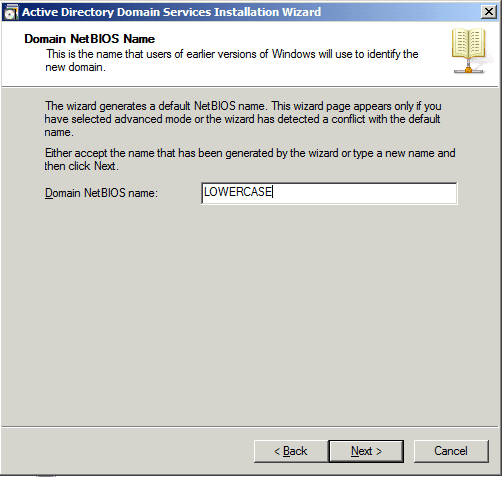The NetBIOS Name Server (NBNS), a protocol cornerstone in the earlier days of network computing, remains a topic of interest for its historical significance and enduring relevance in certain network environments. This article delves into the world of NBNS, offering a retrospective look at its inception, evolution, and the role it played in shaping network communication.
Despite its reduced prominence in modern networking, understanding NBNS provides valuable insights into network naming conventions and legacy systems. Readers will embark on a journey exploring the technical intricacies of NBNS, gaining an appreciation for its historical context and the foundational principles of network name resolution services.
In this article:
- What is NBNS?
- NetBIOS Name Service Versus NetBIOS Name Server
- Technical Aspects of NBNS
- The Decline of NetBIOS and NBNS
- References
1. What is NBNS (NetBIOS Name Server)?
The NetBIOS Name Server was pivotal in the era of networks relying on the NetBIOS protocol. As a key component, NBNS was responsible for translating human-readable computer names into network addresses, a process known as name resolution. This translation was crucial for communication within NetBIOS networks, allowing computers to locate and connect to each other seamlessly.

Historical Context and Development
Developed alongside the rise of NetBIOS in the 1980s, NBNS was integral to early local area networks (LANs), particularly those dominated by IBM PC networks and early Windows systems. It provided a simple yet effective method for managing network identities in an age where networking was just beginning to find its footing in the business and personal computing realms.
Basic Functioning and Mechanisms
At its core, NBNS functioned by maintaining a database of NetBIOS names (the human-readable identifiers for networked devices) mapped to their corresponding network addresses. When a device needed to establish a connection with another, it would query the NBNS to resolve the name to an address, thus facilitating communication. This process was essential in environments where dynamic host configuration protocol (DHCP) and domain name systems (DNS) were not yet prevalent.
2. NetBIOS Name Service Versus NetBIOS Name Server
Clarifying Similarities and Differences
The terms NetBIOS Name Service (NBNS) and NetBIOS Name Server often create confusion, but they refer to distinctly different, albeit closely related, concepts in network communication.
- NetBIOS Name Service: This is the broader protocol used for resolving NetBIOS names to network addresses. It defines the methods and communications involved in managing and translating these names within a network.
- NetBIOS Name Server: This term specifically refers to the server or the system implementing the NetBIOS Name Service protocol. It’s the actual entity that holds the database of names and performs the resolution process.
Understanding this distinction is crucial for comprehending the architecture and operation of early network systems, as well as for troubleshooting and maintaining legacy systems that still rely on this technology. This exploration provides not only a deeper understanding of a once-ubiquitous protocol but also sheds light on the evolution of network name resolution practices.
3. Technical Aspects of NBNS
How NBNS Works in a Network
The NetBIOS Name Server (NBNS) functions by providing a directory service for computers on a network to locate each other through NetBIOS names. When a device joins the network, it registers its NetBIOS name with the NBNS, which then maps this name to a network address. When another device needs to communicate with this registered device, it sends a request to the NBNS to resolve the NetBIOS name to the corresponding network address, facilitating the connection.
Protocols and Processes Involved
NBNS operates using the NetBIOS over TCP/IP (NBT) protocol. This protocol enables NetBIOS services to be used over TCP/IP networks, which was essential as networking shifted from proprietary protocols to the more universal TCP/IP standard. The NBNS communication involves several types of messages, including name registration, name release, name query, and positive or negative responses to these queries.
Comparison with Modern Name Resolution Services
Modern networks predominantly use the Domain Name System (DNS) for name resolution. Unlike NBNS, DNS can resolve names over the internet and not just local networks. DNS also offers a hierarchical, domain-based approach, which is more scalable and efficient for the vast array of devices and services on today’s internet. Additionally, DNS incorporates more sophisticated security features, making it more suited to the complex requirements of contemporary network environments.
4. The Decline of NetBIOS and NBNS
Reasons for the Reduced Use
The decline of NetBIOS and NBNS can be attributed to several factors:
- Scalability Issues. NetBIOS and NBNS were not designed for large-scale networks, making them less viable as networks expanded.
- Security Vulnerabilities. These protocols lacked robust security measures, making them susceptible to various network attacks.
- Increased Complexity. As network complexity grew, the simplistic approach of NetBIOS and NBNS became insufficient for handling diverse network functions and services.
Transition to Modern Protocols and Technologies
The transition to more advanced protocols like DNS and DHCP represented a significant leap in network technology. These modern protocols offered enhanced scalability, security, and compatibility with a wider range of applications and services, aligning better with the needs of contemporary network infrastructures.
5. References
- Books:
- “TCP/IP Illustrated, Volume 1: The Protocols” by W. Richard Stevens
- “Networking Foundations: Technology Fundamentals for IT Success” by Patrick Ciccarelli
- RFCs: